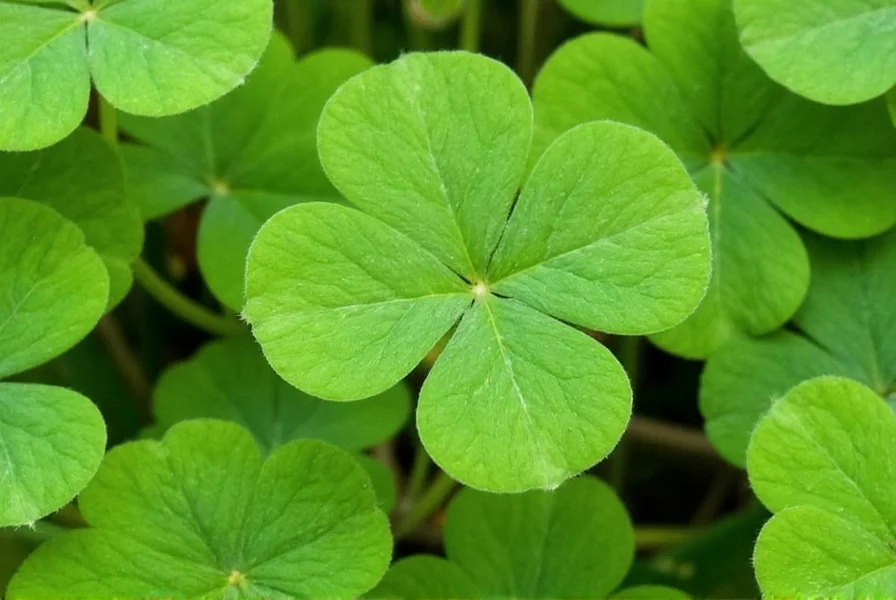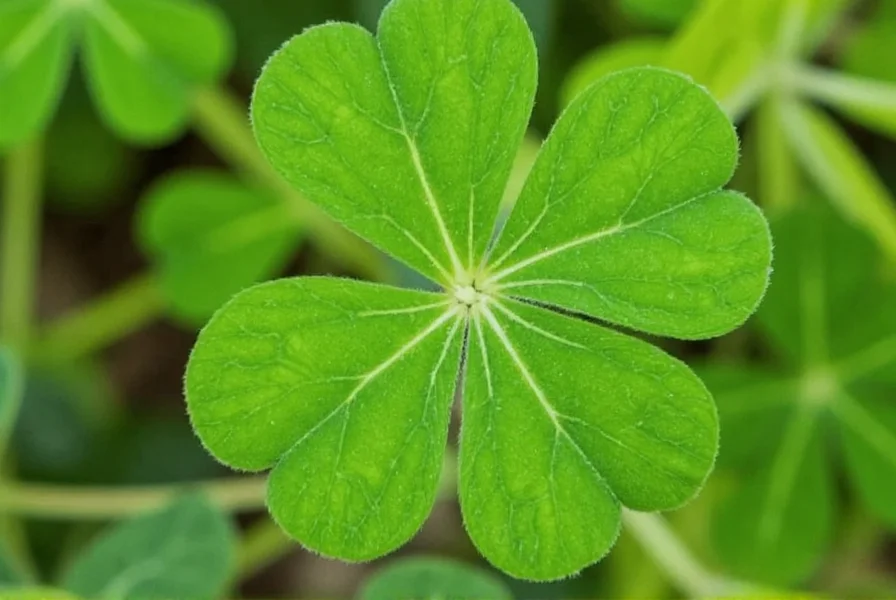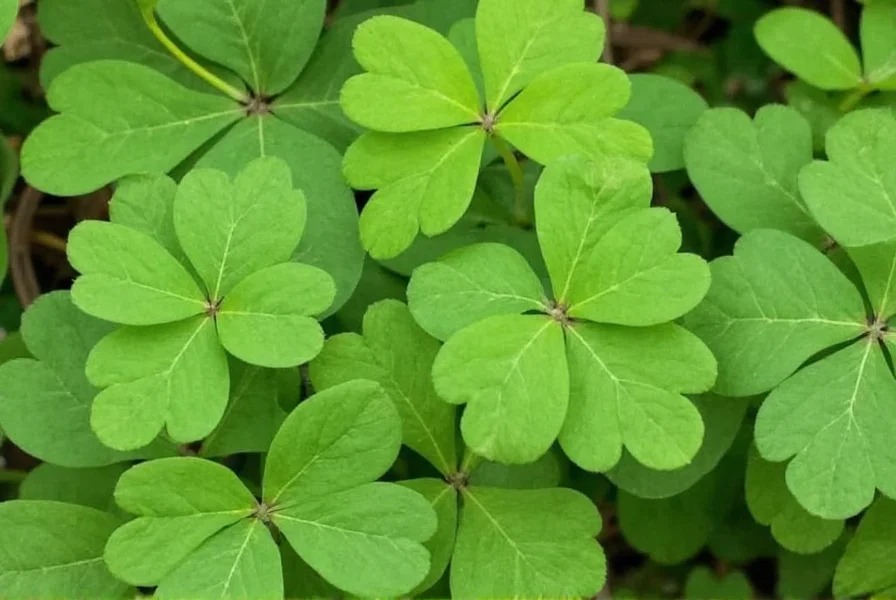Developed by wildlife habitat experts, Imperial Whitetail Clover stands out among forage options due to its aggressive growth habit and ability to thrive in various soil conditions. Unlike annual food plot options that require replanting each season, this perennial variety establishes deep roots that return reliably each year with proper management, making it a cost-effective solution for serious wildlife managers.
Understanding Imperial Whitetail Clover Characteristics
This specialized clover variety features larger leaves than standard white clover, providing more biomass per plant. The high sugar content combined with exceptional protein levels creates an irresistible food source for deer, especially during critical antler growth periods in spring and summer. What makes Imperial Whitetail Clover particularly valuable is its extended "green-up" period—it stays nutritious and palatable well into fall when many other food sources have diminished.
Unlike some clover varieties that go dormant during summer heat, Imperial Whitetail maintains growth through moderate drought conditions, though supplemental watering improves performance during extended dry periods. The plant typically reaches 8-12 inches in height when mature, creating an ideal browsing height for deer without requiring frequent mowing.
Optimal Planting Requirements
Successful establishment of Imperial Whitetail Clover depends on proper soil preparation and timing. The ideal planting window varies by region:
| Region | Best Planting Time | Soil Temperature |
|---|---|---|
| Northern States | April-May or August-September | 50-65°F (10-18°C) |
| Midwest | March-April or August-September | 50-65°F (10-18°C) |
| Southern States | September-October | 60-70°F (15-21°C) |
Soil pH is critical for optimal growth—aim for 6.0-7.0. Conduct a soil test before planting and amend as needed with lime to achieve proper pH levels. The clover performs best in well-drained loam soils but demonstrates surprising adaptability to various soil types when properly prepared.
Planting Techniques for Maximum Success
Follow these steps for successful establishment of your Imperial Whitetail Clover food plot:
- Site preparation: Eliminate existing vegetation through tilling or herbicide application (consult local regulations)
- Soil testing: Test soil 4-6 weeks before planting to determine necessary amendments
- Seedbed preparation: Create a firm, weed-free seedbed with fine texture
- Planting method: Broadcast seed at 2-3 pounds per acre or use a no-till drill at 1-2 pounds per acre
- Seed coverage: Lightly cover seeds with 1/8 to 1/4 inch of soil—avoid deep planting
- Initial watering: Keep soil consistently moist until germination (7-14 days)
For small plots or spot plantings, mix seed with agricultural lime or pelletized limestone at a 1:4 ratio to improve distribution and provide immediate pH adjustment. This technique works particularly well for imperial whitetail clover seeding rate optimization in smaller food plots.
Benefits for Wildlife Management
Imperial Whitetail Clover offers distinct advantages over other food plot options for deer management:
- Nutritional superiority: Provides 25-30% protein content during active growth periods, crucial for antler development and fawn rearing
- Extended attraction period: Stays green and palatable 2-3 weeks longer than standard white clovers into fall
- Drought tolerance: Maintains growth during moderate dry spells better than many annual food plot options
- Soil improvement: Fixes atmospheric nitrogen, reducing fertilizer needs for companion plants
- Year-round value: Provides early spring green-up and late fall nutrition when natural food sources are scarce
When comparing imperial whitetail clover vs other clovers, its larger leaf structure creates more biomass per plant, meaning deer get more nutrition with less browsing effort. This characteristic makes it particularly valuable during hunting seasons when deer seek efficient food sources.
Maintenance Requirements
Proper maintenance ensures your Imperial Whitetail Clover plot remains productive for multiple years:
Fertilization: Apply 200-300 lbs per acre of 0-20-20 fertilizer in early spring. Avoid high-nitrogen fertilizers which promote grass competition. Many successful wildlife managers use a imperial whitetail clover fertilizer schedule that includes a light application after the first heavy grazing period.
Mowing: Mow to 4-6 inches height when plants reach 8-10 inches, typically 2-3 times per season. This encourages lateral growth and prevents flowering, which maintains higher protein levels. The best time for imperial whitetail clover mowing schedule is after heavy deer browsing or when plants begin to flower.
Weed control: Hand-pull aggressive weeds during establishment. Established plots typically outcompete most weeds, but persistent grasses may require selective herbicides labeled for clover use.
Common Challenges and Solutions
Even with proper planting, wildlife managers sometimes encounter these issues with Imperial Whitetail Clover:
Poor germination: Often caused by planting too deep or inadequate soil contact. Solution: Rake lightly after broadcasting seed to ensure proper seed-to-soil contact without burying seeds too deeply.
Grass competition: Particularly problematic in the first growing season. Solution: Consider planting with a nurse crop of annual ryegrass at reduced rates (10-15 lbs/acre) or use selective grass herbicides after establishment.
Drought stress: While relatively drought-tolerant, extended dry periods cause growth slowdown. Solution: Water deeply but infrequently during establishment phase; established plots typically recover after rainfall.
Winter kill: In northern regions, extreme cold without snow cover can damage plants. Solution: Plant in well-drained locations and avoid late fall plantings that don't allow sufficient root development before winter.

Maximizing Your Food Plot Investment
For hunters and wildlife enthusiasts seeking the best clover for deer food plots, Imperial Whitetail Clover delivers consistent results when managed properly. Consider these advanced tips for optimal performance:
- Combine with chicory or other deep-rooted perennials to create a more diverse food plot that provides nutrition throughout varying weather conditions
- Use soil inoculants specifically formulated for clover to enhance nitrogen fixation
- Monitor grazing pressure—rotate plots if possible to prevent over-browsing during critical growth periods
- Consider planting in multiple locations with varying sun exposure to extend the green-up period across your property
Understanding the imperial whitetail clover growth characteristics helps you anticipate its performance throughout the seasons. In spring, it greener earlier than many food plot options, providing crucial nutrition after winter. Summer brings vigorous growth that withstands moderate heat, while fall offers extended browsing opportunities when acorns and other natural foods become scarce.

Long-Term Food Plot Strategy
While Imperial Whitetail Clover provides excellent perennial value, incorporating it into a broader food plot strategy yields the best wildlife management results. Rotate annual and perennial plots to maintain soil health and provide varied nutrition sources throughout the year. Many successful wildlife managers follow a three-year cycle:
- Year 1: Plant Imperial Whitetail Clover as your perennial base
- Year 2: Add an annual blend (like brassicas or cereal grains) to adjacent plots
- Year 3: Refresh perennial plots while maintaining annual rotations
This approach ensures consistent food availability while preventing soil depletion and pest buildup. When planning your imperial whitetail clover planting guide for the season, consider how it fits within your larger wildlife management strategy rather than viewing it as a standalone solution.
When is the best time to plant Imperial Whitetail Clover?
The optimal planting time depends on your region. In northern states, plant in April-May or August-September when soil temperatures reach 50-65°F. Midwest regions should target March-April or August-September. Southern states achieve best results with September-October plantings. Proper soil temperature is more critical than calendar date for successful germination.
How much Imperial Whitetail Clover seed do I need per acre?
For broadcast planting, use 2-3 pounds of seed per acre. When using a no-till drill, reduce to 1-2 pounds per acre. For small plots or spot plantings, mix seed with agricultural lime at a 1:4 ratio to improve distribution. Proper seeding rate is crucial for establishing a dense stand that resists weed competition.
Does Imperial Whitetail Clover require special soil conditions?
Imperial Whitetail Clover performs best in well-drained loam soils with pH between 6.0-7.0. Conduct a soil test before planting and amend as needed with lime to achieve proper pH. While it shows adaptability to various soil types, proper pH and adequate phosphorus/potassium levels significantly improve establishment and long-term productivity.
How long does Imperial Whitetail Clover last in a food plot?
With proper management, Imperial Whitetail Clover can persist for 3-5 years in a food plot. Regular mowing, appropriate fertilization, and monitoring for overgrazing help extend its lifespan. In northern climates, winter kill may reduce longevity, while southern regions often achieve longer stand life due to milder winters.
Why choose Imperial Whitetail Clover over regular white clover?
Imperial Whitetail Clover features larger leaves, higher protein content (25-30%), and extended seasonal growth compared to standard white clover. It stays green and palatable 2-3 weeks longer into fall, provides more biomass per plant, and demonstrates better drought tolerance. These characteristics make it particularly valuable for deer food plots where maximum nutritional value and attraction are priorities.











 浙公网安备
33010002000092号
浙公网安备
33010002000092号 浙B2-20120091-4
浙B2-20120091-4